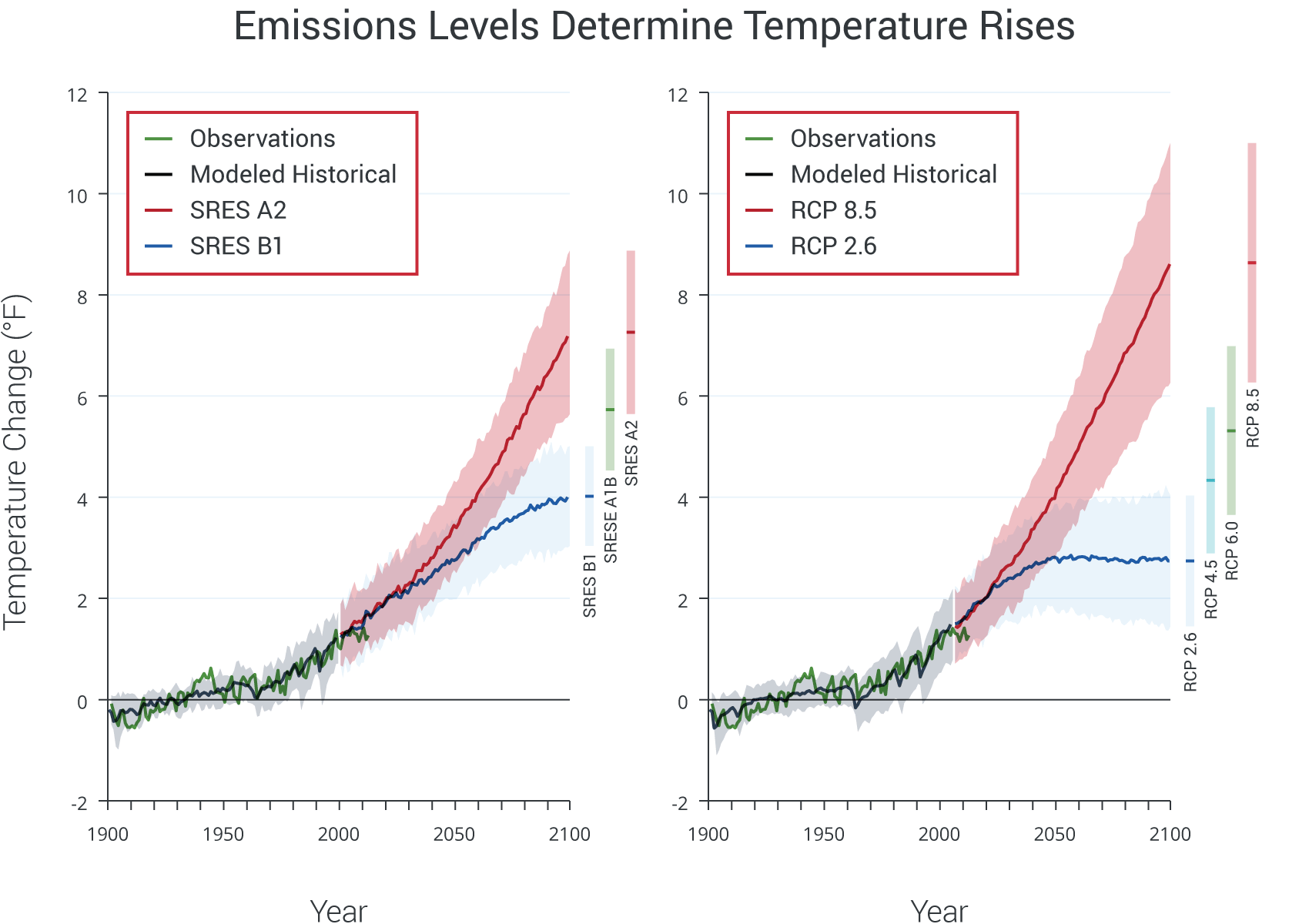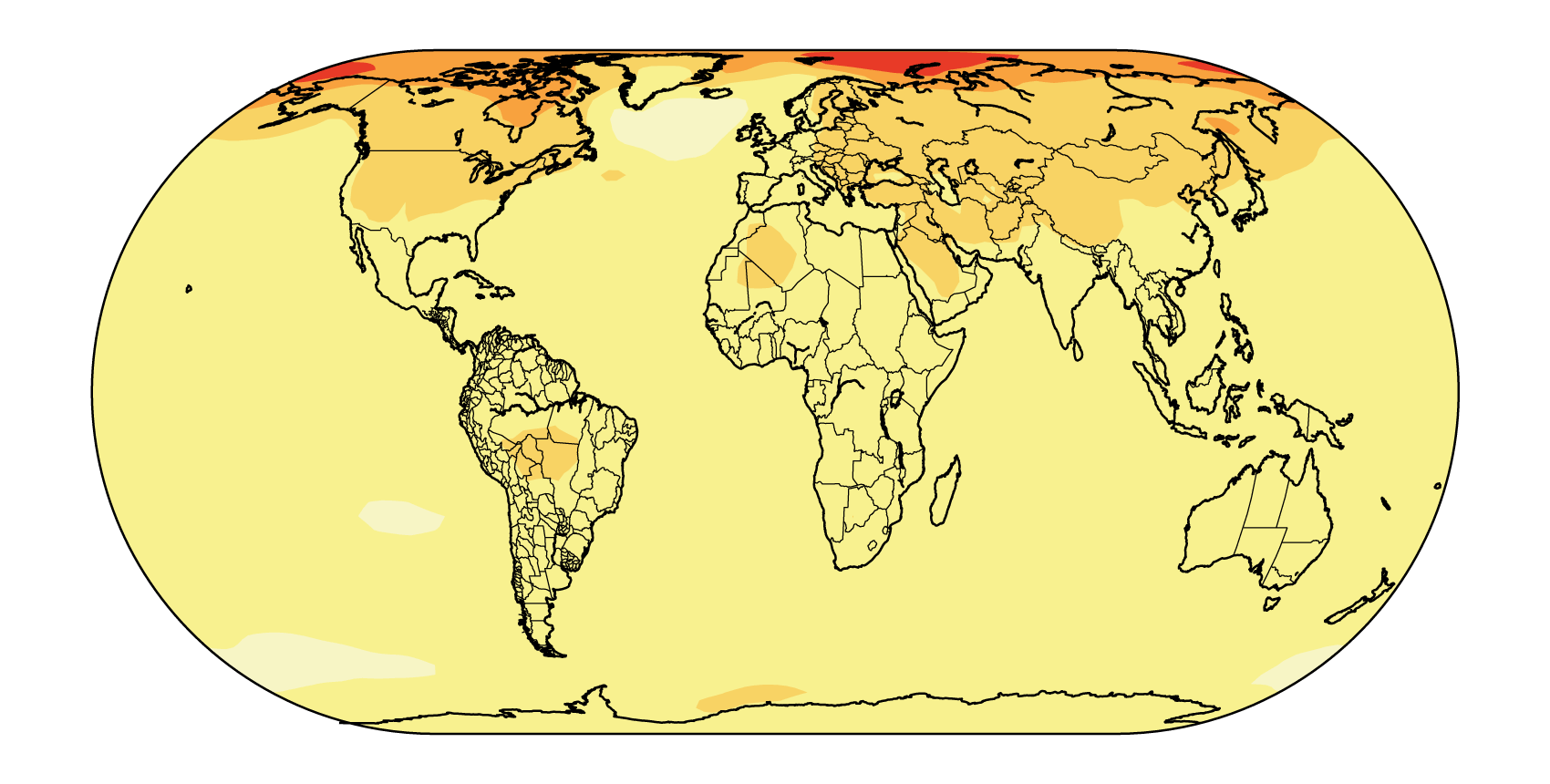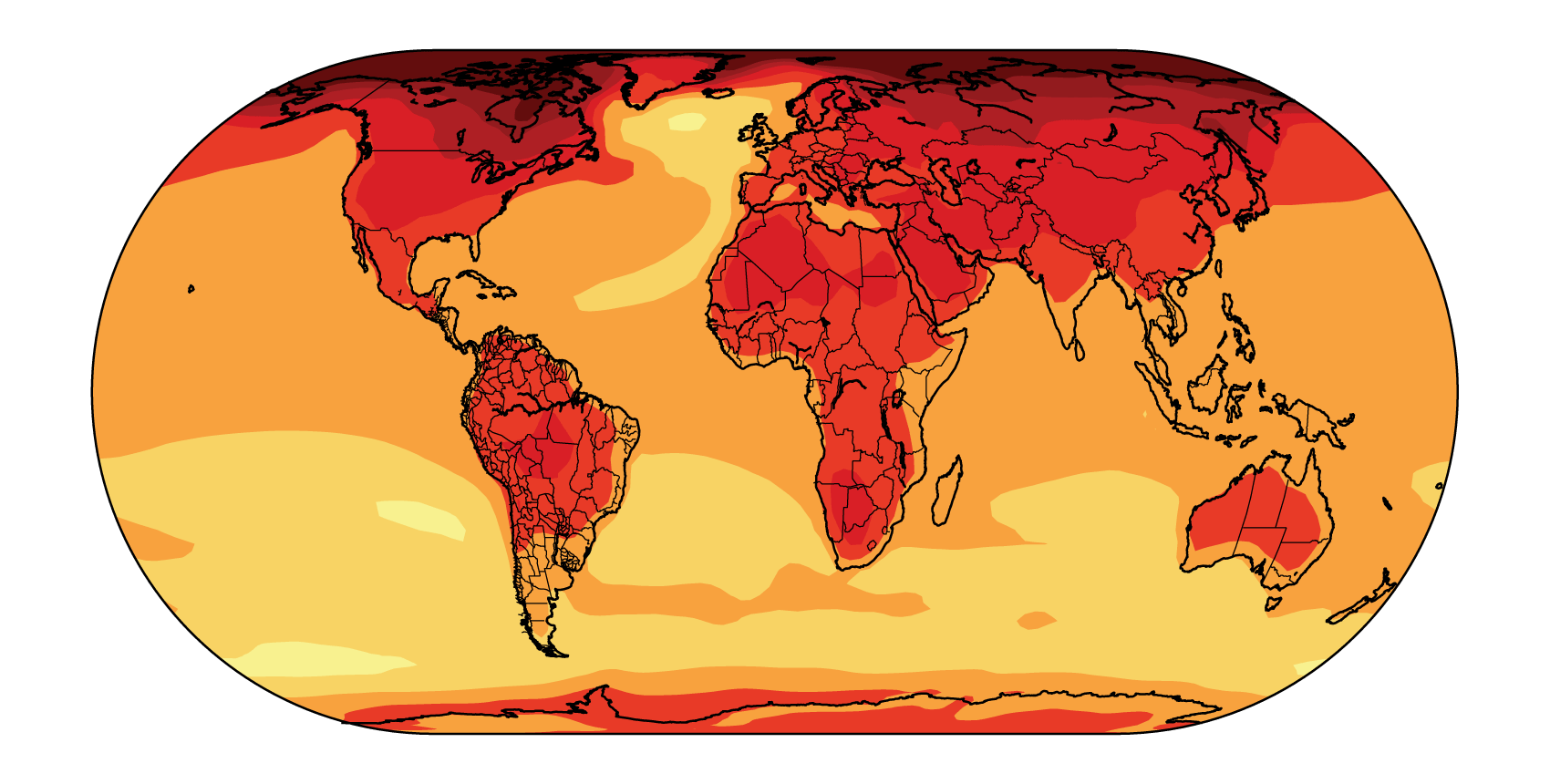Future Climate Change
A certain amount of continued warming of the planet is projected to occur as a result of human-induced emissions to date; another 0.5°F increase would be expected over the next few decades even if all emissions from human activities suddenly stopped, although natural variability could still play an important role over this time period. However, choices made now and in the next few decades will determine the amount of additional future warming. Beyond mid-century, lower levels of heat-trapping gases in scenarios with reduced emissions will lead to noticeably less future warming. Higher emissions levels will result in more warming, and thus more severe impacts on human society and the natural world.
Confidence in projections of future climate change has increased. The wider range of potential changes in global average temperature in the latest generation of climate model simulations used in the Intergovernmental Panel on Climate Change’s (IPCC) current assessment – versus those in the previous assessment – is simply a result of considering more options for future human behavior. For example, one of the scenarios included in the IPCC’s latest assessment assumes aggressive emissions reductions designed to limit the global temperature increase to 3.6°F (2°C) above pre-industrial levels. This path would require rapid emissions reductions (more than 70% reduction in human-related emissions by 2050, and net negative emissions by 2100 – see the Appendix 3: Climate Science, Supplemental Message 5) sufficient to achieve heat-trapping gas concentrations well below those of any of the scenarios considered by the IPCC in its 2007 assessment. Such scenarios enable the investigation of climate impacts that would be avoided by deliberate, substantial reductions in heat-trapping gas emissions.
Projections of future changes in precipitation show small increases in the global average but substantial shifts in where and how precipitation falls. Generally, areas closest to the poles are projected to receive more precipitation, while the dry subtropics (the region just outside the tropics, between 23° and 35° on either side of the equator) expand toward the poles and receive less rain. Increases in tropical precipitation are projected during rainy seasons (such as monsoons), especially over the tropical Pacific. Certain regions, including the western U.S. (especially the Southwest) and the Mediterranean, are presently dry and are expected to become drier. The widespread trend of increasing heavy downpours is expected to continue, with precipitation becoming less frequent but more intense.,,, The patterns of the projected changes of precipitation do not contain the spatial details that characterize observed precipitation, especially in mountainous terrain, because the projections are averages from multiple models and because the effective resolution of global climate models is roughly 100-200 miles.
One important determinant of how much climate will change is the effect of so-called “feedbacks” in the climate system, which can either dampen or amplify the initial effect of human influences on temperature. One important climate feedback is the loss of summer Arctic sea ice, allowing absorption of substantially more of the sun’s heat in the Arctic, increasing warming, and possibly causing changes in weather patterns over the United States.
The observed drastic reduction in sea ice can also lead to a “tipping point” – a point beyond which an abrupt or irreversible transition to a different climatic state occurs. In this case, the dramatic loss of sea ice could tip the Arctic Ocean into a permanent, nearly ice-free state in summer, with repercussions that may extend far beyond the Arctic. Such potential “tipping points” have been identified in various components of the Earth’s climate system and could have important effects on future climate. The extent and magnitude of these potential effects are still unknown. These are discussed further in the Appendix 4: Frequently Asked Questions, under Question T.
Climate Sensitivity
“Climate sensitivity” is an important concept because it helps us estimate how much warming might be expected for a given increase in the amount of heat-trapping gases. It is defined as the amount of warming expected if carbon dioxide (CO2) concentrations doubled from pre-industrial levels and then remained constant until Earth’s temperature reached a new equilibrium over timescales of centuries to millennia. Climate sensitivity accounts for feedbacks in the climate system that can either dampen or amplify warming. The feedbacks primarily determining that response are related to water vapor, ice and snow reflectivity, and clouds. Cloud feedbacks have the largest uncertainty. The net effect of these feedbacks is expected to amplify warming.
Climate sensitivity has long been estimated to be in the range of 2.7°F to 8.1°F. As discussed in the Climate Science Appendix, recent evidence lends further confidence in this range.



















